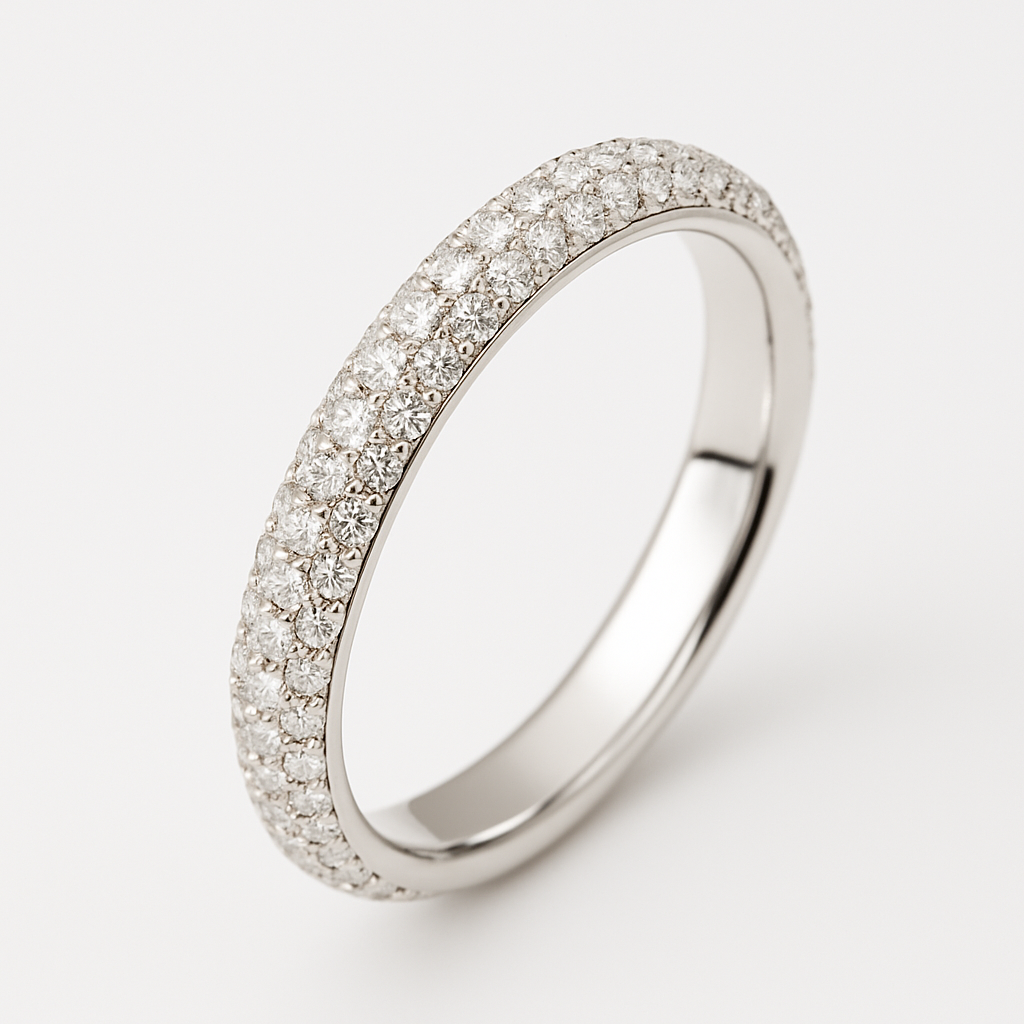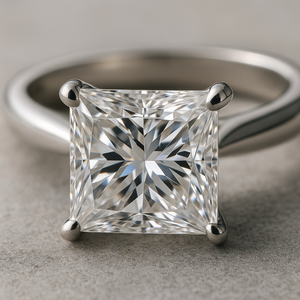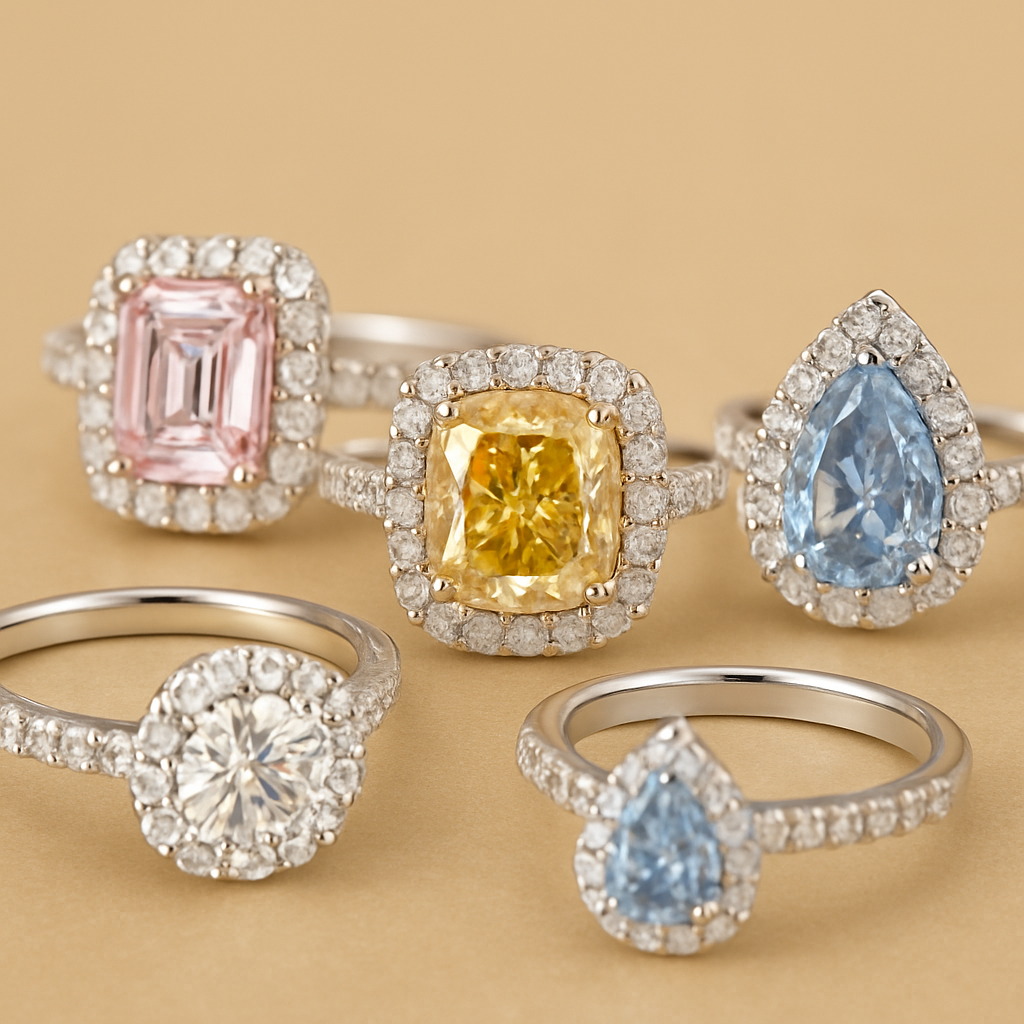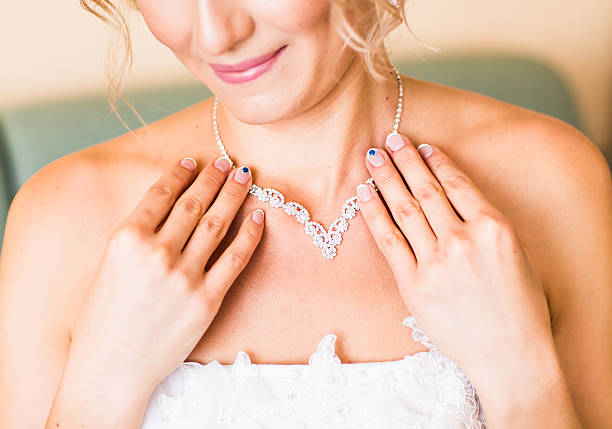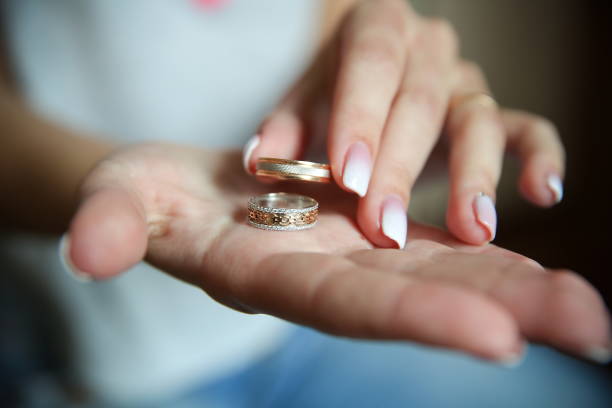Introduction: The Art of Pave Setting
Imagine a surface that is so densely covered in sparkling stones that it seems to shimmer continuously. That is the pavé setting's magic. Originating from the French word "pavé," which means "paved," this technique mimics Paris's cobblestone streets, but with diamond paving instead. The appearance of a diamond-encrusted surface is produced by the close spacing between each tiny stone. Because of its capacity to accentuate brilliance and produce visual enchantment, this setting has grown to be a popular choice in fine jewelry.
A Brief History of Pave

Pavé settings are centuries old, but the technique feels contemporary and fashion-forward. The style was first made popular by Art Deco and vintage pieces, and it was frequently used to accentuate intricate cocktail rings, tiaras, and brooches. It became a symbol of elegance over time and is now widely used in everything from red carpet jewelry to engagement rings.
How Pave Setting Works: A Closer Look
Crafting a pavé setting requires meticulous precision. Jewelers drill tiny holes into the metal band, place the small diamonds or gemstones into the holes, and then secure them with miniature beads or prongs. The process is often done under a microscope, especially for micro pavé, to ensure the stones are perfectly aligned and securely fastened. The result? A smooth, continuous surface of sparkle with minimal visible metal.
Different Types of Pavé Settings
-
Classic Pavé:
There is very little metal between the small round diamonds set in a single row. It provides a classic and classic sparkle. -
Micro Pavé:
A delicate variation that frequently calls for magnification and features incredibly tiny stones (as small as 0.01 ct) set with remarkable precision. High-end jewelry and designer brands often use it. -
French Pavé (also known as V-Cut Pavé):
Stones are placed in V-shaped grooves that let in more light, increasing radiance and decreasing the visibility of metal. -
U-Cut Pavé:
Stunningly contemporary and incredibly reflective, each diamond is set in a U-shaped recess that resembles a scalloped edge. -
Bead Pavé:
Stones are held in place with small beads of metal raised from the band, commonly seen in vintage-inspired designs. -
Scallop Pavé:
A variation of bead Pavé where the metal between stones is shaped like tiny scallops, offering a graceful, flowing aesthetic.
Where You’ll Find Pavé in Jewelry
-
Engagement Rings:
Pavé diamonds are frequently used to adorn the band or create a halo around the focal stone. Without overpowering the focal point, this arrangement intensifies the sparkle. -
Wedding Bands:
Pavé-set eternity and half-eternity bands have a classic style that goes well with solitaires or stacked rings. -
Necklaces and Earrings:
Pendant outlines, studs, and hoops are enhanced by pavé detailing, which adds style without being heavy. - Tennis bracelets and bangles with pavé work are sophisticated and instantly elevate an ensemble.
Why Choose a Pavé Setting?
🌟 Maximum Sparkle: Pave provides unparalleled brilliance in small areas with little metal and tightly packed stones.
💎 Boosts Center Stones: A solitaire is highlighted by a pavé band or halo, which makes it seem bigger and more brilliant.
💫 Elegant & Versatile: Pavé works well with a variety of styles, whether you prefer modern, classic, or vintage designs.
🎁 Symbolic Significance: Pavé diamonds are frequently used in bridal jewelry to symbolize the various moments and memories that comprise a lifetime commitment.
Custom Design Possibilities
Due to its versatility, pavé is a favorite among jewelers and designers. It is adaptable to:
- Mixed Metals: For a romantic style, combine white diamonds with rose gold.
- Colored Gemstones: To create striking contrast or distinctive birthstone jewelry, use sapphires, rubies, or emeralds in pavé.
- Asymmetrical Designs: For a contemporary twist, a band's one side can be covered in pavé.
How to Style Pavé Jewelry
When donning jewelry made of pavé:
- For a well-balanced contrast, wear a plain wedding band with a pavé engagement ring.
- For a stylish layered look, stack several pavé bands with different metal colors and widths.
- Select necklaces or earrings with delicate pavé hoop accents to add flair to both formal and informal ensembles.
In addition to shining on its own, pavé jewelry can be the ideal addition to a statement piece.
Care & Maintenance for Pavé Jewelry
Although pavé settings are safe, they need to be maintained because of their complexity:
🧽 Cleaning: Gently clean in between the stones with a soft brush, warm water, and mild detergent. Unless a jeweler recommends it, stay away from ultrasonic cleaners.
🔍 Check Prongs: To make sure no stones are loose, have your jeweler check the prongs once a year.
🧤 Storage: To prevent snagging or scratching, keep pavé pieces apart. The ideal container is a lined box or soft pouch.
🚫 Prevent Heavy Wear: To preserve the environment, take off the pavé rings when engaging in strenuous activities, working out at the gym, or gardening.
Final Thoughts: Is Pavé Setting Right for You?
The pavé setting is a stunning option if you're searching for sophistication, glitz, and classic charm. It is a favorite for everyday wear as well as life's most memorable moments because of its capacity to capture light and amplify beauty, whether on a bold bracelet or a delicate band. Pavé jewelry is a true celebration of outstanding craftsmanship and inventive design, regardless of whether you are drawn to its romantic vintage roots or its sleek modern interpretations.
We at San Liora are proud to provide finely crafted pavé-set pieces that are the pinnacle of sophistication, artistry, and sustainability. Since each design is created using stones that are ethically sourced and expertly polished, your jewelry will not only shine but also convey a sense of quality and thoughtful luxury. Select brilliance and pavé. Select San Liora.


